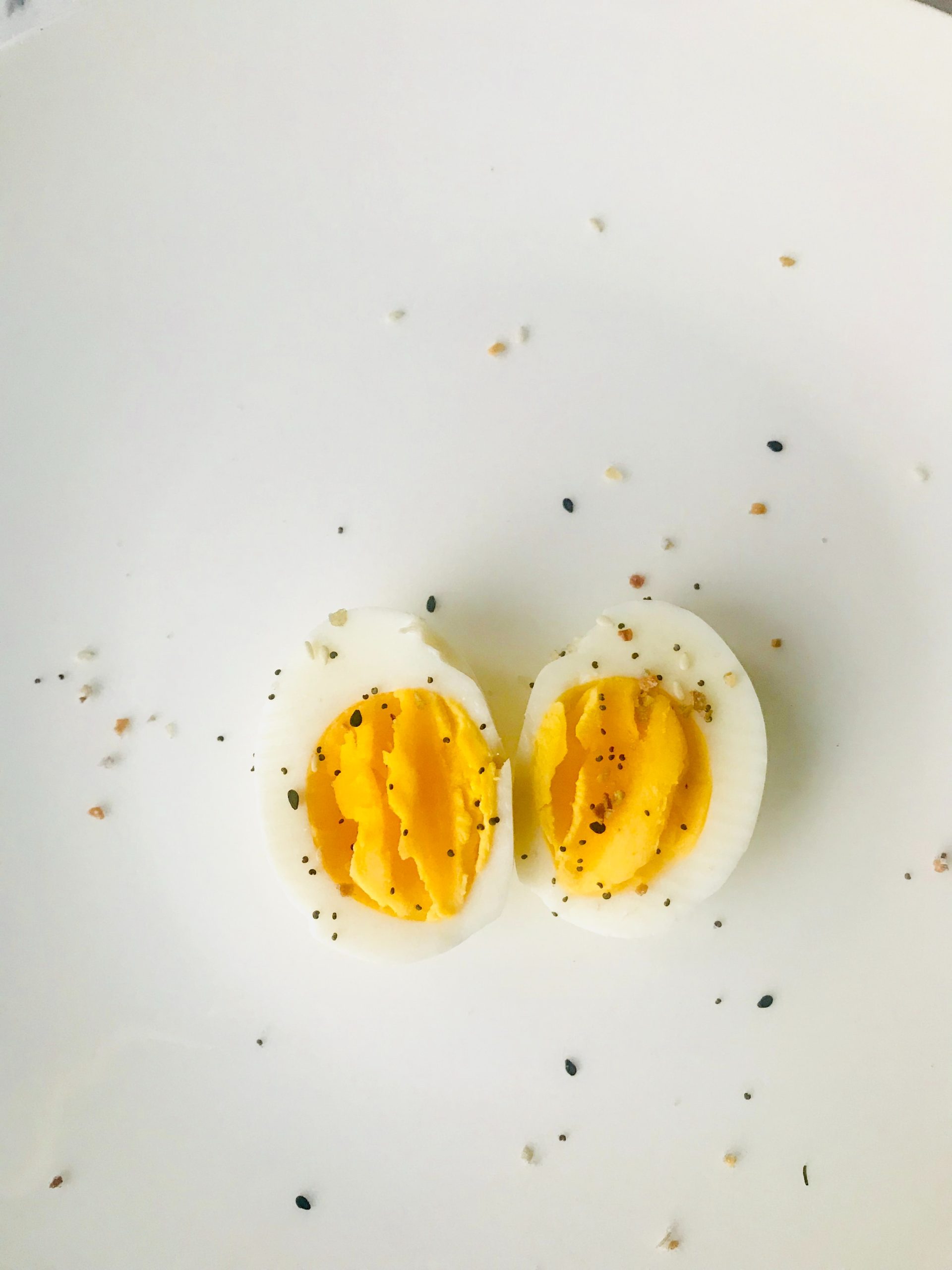Welcome to the world of soft-boiled eggs, where perfection is key. For those who love their yolks runny and whites tender, mastering the art of soft-boiled eggs can be a challenging feat. But fear not, because we’re here to guide you through every step of the way! From boiling techniques to tips for achieving that perfect texture, this comprehensive guide will have you cooking up your best batch yet. So grab your apron and get ready to explore the wonderful world of soft-boiled eggs with us.
What is Soft-Boiled Eggs?
Soft-boiled eggs are a delicate and delicious breakfast staple that many people enjoy. Unlike hard-boiled eggs, which have a fully cooked yolk and solid white, soft-boiled eggs require careful timing to achieve the perfect texture.
To make a soft-boiled egg, you’ll need to briefly cook it in boiling water until the whites are set but the yolk remains runny. The exact cooking time will depend on your preferences and how large your egg is.
One of the key benefits of soft-boiling an egg is that it’s quick and easy. You can have a perfectly cooked breakfast in just a matter of minutes! Plus, soft-boiled eggs offer more versatility than their hard-cooked counterparts: they’re great for dipping toast or vegetables into, or adding on top of salads for extra protein.
When done correctly, soft-boiled eggs are both visually appealing and deliciously satisfying. So why not give them a try? With our helpful tips and techniques, you’ll be mastering the art of soft-boiling in no time.
How to Boil an Egg Perfectly Every Time
Boiling an egg seems like a simple task, but achieving the perfect texture can be a challenge. Whether you prefer soft-boiled or hard-boiled eggs, there are a few tips that will help you master the art of boiling eggs perfectly every time.
First, start by selecting fresh eggs and bring them to room temperature before boiling. This helps prevent cracking during cooking. Next, place the eggs in a pot and cover them with cold water. You want enough water to fully cover the eggs with about an inch of water above them.
Place the pot on high heat until it comes to a rolling boil. Once it boils, remove from heat and cover your pot with its lid for 4-5 minutes if you’re going for soft boiled or up to 12 minutes for hard-boiled ones.
When done cooking carefully remove each egg using a slotted spoon and transfer into ice-cold water bath which will stop further cooking process also making peeling much easier thereafter!
By following these simple steps, you’ll have perfectly boiled eggs every time!
Tips for Better Soft-Boiled Eggs
Soft-boiled eggs are the breakfast staple in many households. However, achieving the perfect soft-boiled egg requires some finesse. Here are some tips to help you elevate your soft-boiled egg game:
Start with room temperature eggs: Cold eggs can cause uneven cooking and prolong the boiling process. Allow your eggs to sit at room temperature for at least 30 minutes before boiling.
Use a timer: Timing is everything when it comes to soft-boiled eggs. Set a timer for 5-6 minutes depending on how runny you like your yolks.
Shock in ice water: After removing from heat, immediately transfer your cooked eggs into an ice bath to stop the cooking process and make them easier to peel.
Peel under running water: Soft-boiled eggs can be notoriously tricky to peel without damaging them. Try peeling under cold running water which should loosen up any stubborn bits of shell.
Add seasoning after cooking: Adding salt or other seasonings before boiling can cause pitting on the shells or discoloration of yolks. Wait until after cooking before adding any seasoning.
By following these simple tips, you’ll be well on your way towards mastering the art of soft-boiled eggs!
More tips for Soft-Boiled Eggs
When it comes to soft-boiled eggs, there are a few more tips that can take your egg game to the next level. First and foremost, make sure you’re using fresh eggs as they will have a firmer white and rounder yolk, making them easier to peel.
Another tip is to use room temperature eggs by letting them sit out for about 30 minutes before cooking. This will help prevent cracking when adding them to boiling water or steam.
To achieve consistent results, try using an egg timer or stopwatch instead of relying on guesswork. Different cooking times may be needed depending on the size of the eggs and personal preference.
When peeling soft-boiled eggs, gently tap each end against a hard surface then roll between your hands to loosen the shell from the membrane underneath. Carefully remove the shell under cold running water which can also help cool down hot eggs quickly.
Experiment with different accompaniments such as toast soldiers sprinkled with salt and pepper or dipping vegetables like asparagus spears into runny yolks for added flavour and nutrition. With these tips in mind, you’ll be well on your way towards mastering perfect soft-boiled eggs every time!
Get the Perfect Texture with Soft-Boiled Eggs
Getting the perfect texture for soft-boiled eggs is a delicate balance between cooking time and temperature. Overcooking will lead to rubbery egg whites and hard yolks, while undercooking will result in runny egg whites and raw yolks.
To get the perfect texture, start by bringing water to a boil in a pot. Once the water is boiling, reduce it to a gentle simmer. Using a slotted spoon, gently lower your eggs into the water one at a time.
Cooking times can vary depending on personal preference and altitude, but typically 3-4 minutes is enough for soft-set whites with slightly runny yolks. If you prefer firmer yolks or live at higher altitudes, adjust cooking times accordingly.
Once cooked, remove the eggs from the pot using your slotted spoon and immediately rinse them under cold running water to stop any residual cooking.
Crack open your soft-boiled eggs onto toast or enjoy them as they are seasoned simply with salt and pepper. The creamy yolk combined with perfectly set whites makes for an irresistible breakfast treat!
More Recipes for Soft-Boiled Eggs
If you’re a fan of soft-boiled eggs, there are plenty of delicious recipes out there that incorporate this tasty ingredient. Here are a few ideas to get you started:
1) Soft-Boiled Egg and Avocado Toast: Mash up some avocado on top of toasted bread and add a soft-boiled egg for a healthy and protein-packed breakfast.
2) Soy Sauce Soft-Boiled Eggs: Mix soy sauce, mirin, water, sugar, and ginger in a pot and bring to boil. Add the eggs one by one into the pot while it’s still boiling. Let cook for 6 minutes then peel the shell off.
3) Ramen with Soft-Boiled Egg: Top your bowl of ramen with a perfectly cooked soft-boiled egg for added flavor and richness.
4) Warm Spinach Salad with Bacon and Soft-Boiled Eggs: Cook bacon until crispy then sauté spinach leaves until wilted. Serve topped with chopped bacon bits, croutons or almonds alongside halved soft boiled eggs
5) Steamed Asparagus with Soft-Boiled Eggs: Steam asparagus until tender-crisp then top each spear with half an egg along salt flakes which adds texture contrast between crunchy asparagus spears against the delicate runny yolk!
Conclusion
Mastering the art of soft-boiled eggs is all about finding the perfect balance between time and temperature. With steam being a reliable method for achieving this delicate texture, you can impress your friends and family with restaurant-quality eggs every time.
By following our guide on how to boil an egg perfectly every time, along with some helpful tips for better results, you’ll be able to enjoy delicious soft-boiled eggs whenever you want. Whether it’s on their own as a snack or as part of a larger meal like ramen or salad – there are many ways to get creative with this versatile ingredient!
So why not give it a try today? With practice, patience and the right techniques in place – we’re confident that you too can master the art of soft-boiled eggs!




